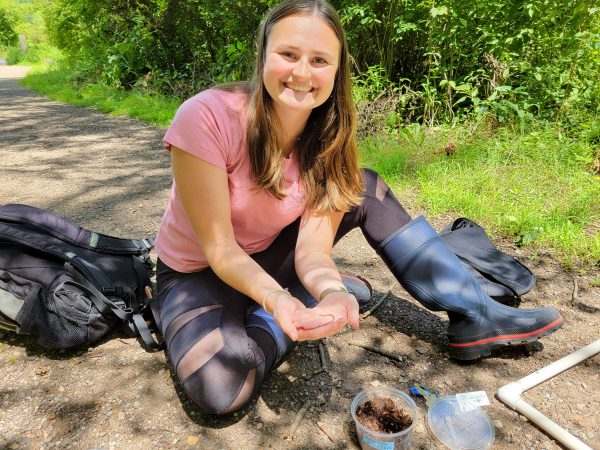
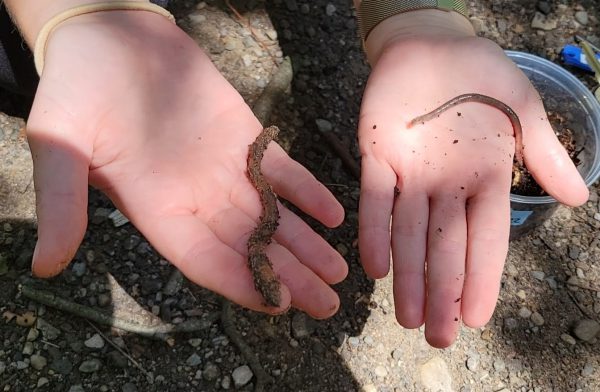
Worms crawl in and worms crawl out, but biology major Katie Rock ’23 has found a problematic variety that jumps right here in Kalamazoo.
Rock’s Senior Integrated Project (SIP), cataloging the earthworms inhabiting Lillian Anderson Arboretum, has unearthed an invasive species never before officially documented within our city, the jumping worm (scientific name Amynthas). Rock said all worms in Michigan are invasive species given that glaciers killed the native varieties during the Ice Age. The crawlers we have now mostly came from Europe.
“Most of the earthworms are good for agriculture and gardening,” Rock said. “In the forests, they’re not as beneficial, but they have benefits in producing and giving nutrients.”
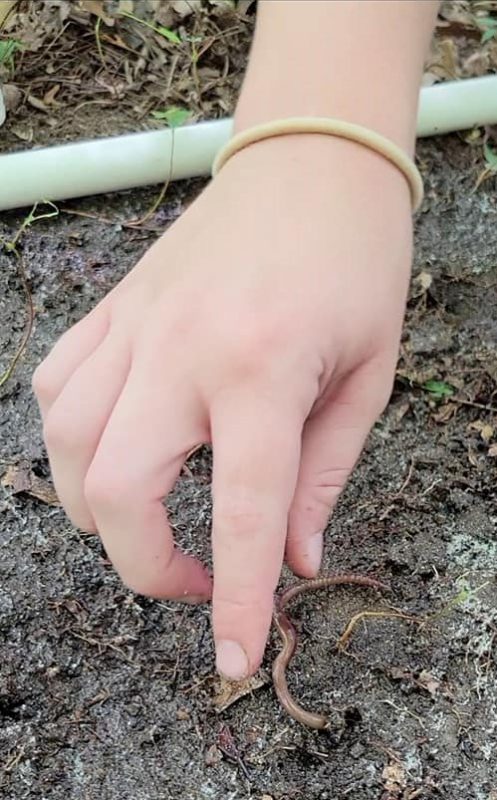
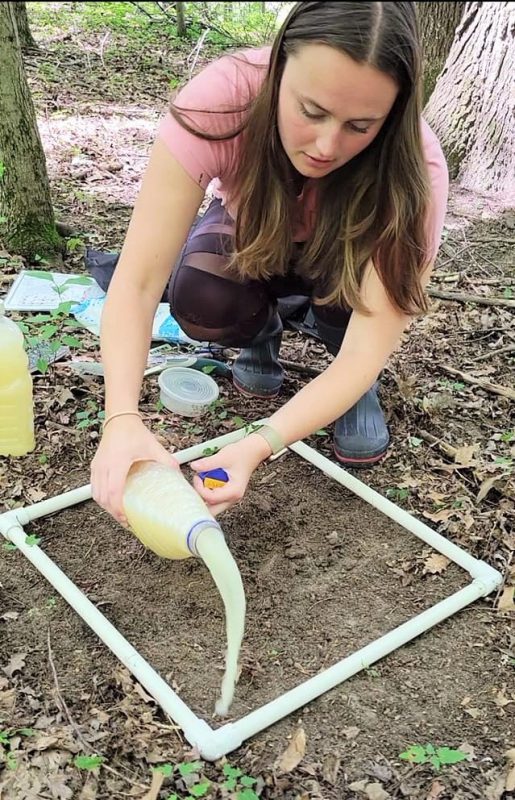
Jumping worms, though, which come from places such as Korea and Japan, present their own problems. They have no natural predators, individual specimens can reproduce by themselves, and they go through a lifecycle in one season, so they’re faster to mature, Rock said.
“They originally came from Asia through tiny cocoons,” she said. “They get into potted plants and then people plant them, so they spread all over. There have been attempts to stop their spread, but there hasn’t been any solution.”
Jumping worms inhabit leaf litter and the top few inches of soil on the ground. Their movements, processes and quick metabolism change the soil’s texture, so it looks like coffee grounds, Rock said, stripping the soil of its nutrients, and potentially killing plants. They’ve been found in other Great Lakes region states such as Wisconsin and Minnesota. In Michigan, they were found for the first time in the Detroit area around 2008 and more recently in Grand Rapids.
Plus, with the crawlers in the arboretum, local residents are likely to find the jumping worms in local yards.
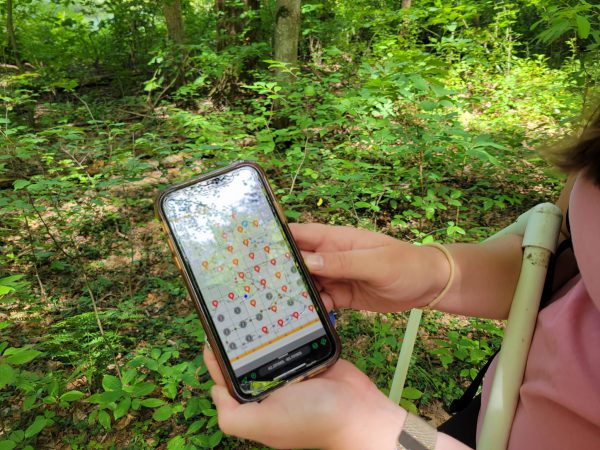

“If you see any, do not transfer any of your plants over to anyone else,” Rock said. “It’s actually recommended that we kill them because of their detrimental effects on ecosystems.”
Rock and her SIP advisor, Professor of Biology Ann Fraser, have found mostly juvenile jumping worms with a few adults in the arboretum, as expected because they start each year as eggs and take time to grow to adults. The species is identifiable thanks to their extreme movements that can be provoked by human touch, a glossy gray color that leaves them nearly translucent in their gastrointestinal regions, a flat ring-like structure called a clitellum that circles their body and serves as a reproductive organ, and small hairs, or bristles, that can be seen under a microscope.
“I’m going to do a GIS (geographic information system) map in my research, comparing where earthworms are found to where invasive species of plants are found,” Rock said. “We think there might be a correlation. It’s also possible that deer might be spreading them. For right now, the only place we’ve found them is close to Batts Pavilion. We have not found any yet on the other side of the power lines. We’re wondering if that’s because there’s an intersection where they haven’t crossed yet.”
Testing for jumping worms can be a heavy lift for Rock, requiring assistance from a golf cart as she hauls her equipment, including one gallon of mustard water for every test she intends to conduct during a stay at the arboretum.
The mustard water is just that: a mix of mustard powder and water that Rock pours on the ground within a given quadrant or sampling area. The mustard irritates the worms and forces them to the surface, where Rock collects them. She also records what she sees in the trees; collects a soil sample; clears away any vegetation and debris; measures the soil’s temperature, pH balance and moisture; and notes other bugs she finds.
“Sometimes I find a lot of worms and sometimes I find just a few,” Rock said. “After I collect my worms, I’ll measure them and put them in ethanol. I then look at them under the microscope, ID them and separate them in jars by type.”
If Rock finds more adults when she resamples as her work concludes this month, she can confirm a larger infestation. Long term, it might be impossible to get rid of all of the jumping worms, although figuring out how to isolate their locations within the arboretum would provide Rock with the type of experience she wants to have in preparing for a career.
“I want to go into environmental science and ecology, and I think this is a good start, especially with the experience in an invasive species,” Rock said. “The process of finding it, cutting it off and finding ways of preserving other areas from it is important. I hope to bring in that knowledge in grad school or in a job with some ideas for tackling a new problem, even if it’s not worms.”

